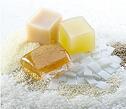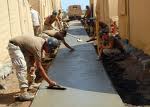
Here is information that will be of interest to those who purchase HMPSA products regarding the trend in the raw material market, specifically SBS(Styrene-Butadiene-Styrene)block copolymer.
"Styrene-Butadiene-Styrene block copolymer (SBS) is a unique copolymer with extensive application, largest output, and lowest cost. SBS offers excellent surface friction coefficient, little permanent deformation, great tensile strength, excellent low-temperature behavior, great workability and good electric property. The polymer is extensively used in applications such as shoemaking, asphalt modification, polymer modification, liquid seal materials, waterproof coatings, electric wires, automobile components, electric cables and medical apparatuses among several others. Currently the SBS market continues to face crunch emanating from rising prices of crude oil. The effect of such volatility on end-use applications and regional downstream markets is particularly significant as the industry derives its raw material from the petrochemical industry. Conditions in almost all parts of the world including the Middle East, Eastern Europe, Asia, North and South America, as well as Africa have an increasing global implication on supply and demand for petrochemicals and raw materials. However, the prospects for the global Styrene-Butadiene-Styrene (SBS) Block Copolymer and its development continue to appear positive. SBS sales are expected to increase as a result of global expansion in the compounding and adhesive applications, as well as due to the enhanced penetration of modified asphalts into roadway and roofing construction.
The polymer industry continued to be under pressure driven by supply and pricing dynamics in early 2011. With the supply of raw materials such as butadiene remaining tight and demand improving, the industry currently faces difficulty in competing against other higher-margin industries for supply. Butadiene prices are expected to increase further in future along with a steady rise in demand, which is expected to further spike the prices for styrene-butadiene-styrene (SBS). SBS prices climbed up by 18% in 2010. During the 1st quarter of 2011, prices increased by 5% and are further expected to climb by 5% each quarter for the remaining year. With the price of natural latex rubber reaching new highs in recent years, the industry is witnessing a continuous shift in the tire manufacturing industry, towards styrene-butadiene rubber (SBR) and styrene-isoprene-styrene (SIS). This is expected to further drive the demand for butadiene, hence scaling up the prices for SBS.
Asphalt Modification is the largest end-use application area for SBS in terms of volume sales. SBS is an effective asphalt modifier that is utilized in road asphalt modification and modified asphalt waterproof coiled material. SBS finds extensive application in wall bodies of several structures such as bathrooms, toilets, basements, bridges, cold storage chambers, airports, commercial buildings, highways, high-volume interstates, intersections and others. Market for polymer modification holds substantial potential for the SBS market and finds extensive application in vehicle steering wheels/bumpers, sealing parts and electric components. Polymer modification improves the environmental impact of road construction by enabling lesser need for raw materials and creating a safer and more durable road surface.
Asia-Pacific dominates the global sphere as the single largest and fastest growing regional market for SBS both in value and volume terms, as stated by the new market research report on Styrene-Butadiene-Styrene (SBS) Block Copolymer. The fastest growth in demand for styrene is forecast in the Middle East, China, Eastern and Central Europe, and Central and South America. On the basis of the current announcements for capacity expansion, Mexico, Thailand, India together with other Asian countries are expected to remain the net importers while the US, Japan, Canada, Singapore, the Middle East, and the Republic of Korea, are likely to remain net exporters until 2013.
Key players profiled in the report include China National Petroleum Corporation, Dexco Polymers LP, Dynasol Elastomers, Kraton Performance Polymers, LCY Chemical Corp, Polimeri Europa, ShenZhen Yanshan Petrochemical, Sinopec Baling Company Petrochemical Co., among others."



 surfaces to yield measurable energy savings. The ENESEAL HR is not a paint but a single component, water based, liquid ceramic-filled membrane. It dries to a more durable than paint, seamless, flexible "skin", that refracts and reflects heat 10 - 30 degrees better than paint and higher for roofs without a heat refractive surface, while providing a moisture resistant barrier.
surfaces to yield measurable energy savings. The ENESEAL HR is not a paint but a single component, water based, liquid ceramic-filled membrane. It dries to a more durable than paint, seamless, flexible "skin", that refracts and reflects heat 10 - 30 degrees better than paint and higher for roofs without a heat refractive surface, while providing a moisture resistant barrier.  Metallocene hot melts have improved productivity for packaging production operations which use hot melt adhesive , especially where odor and charring were problems. But their cost continues to rise and raw material supplies continue to be strained because of capacity limitations, which has given rise to plant managers looking for cost effective alternatives in EVA and Polyethylene based hot melts. STRYTECH can now provide a hot melt based on improved Polyethylene(PE) technology that meets these needs of packaging operations and is cost effective.
Metallocene hot melts have improved productivity for packaging production operations which use hot melt adhesive , especially where odor and charring were problems. But their cost continues to rise and raw material supplies continue to be strained because of capacity limitations, which has given rise to plant managers looking for cost effective alternatives in EVA and Polyethylene based hot melts. STRYTECH can now provide a hot melt based on improved Polyethylene(PE) technology that meets these needs of packaging operations and is cost effective.
